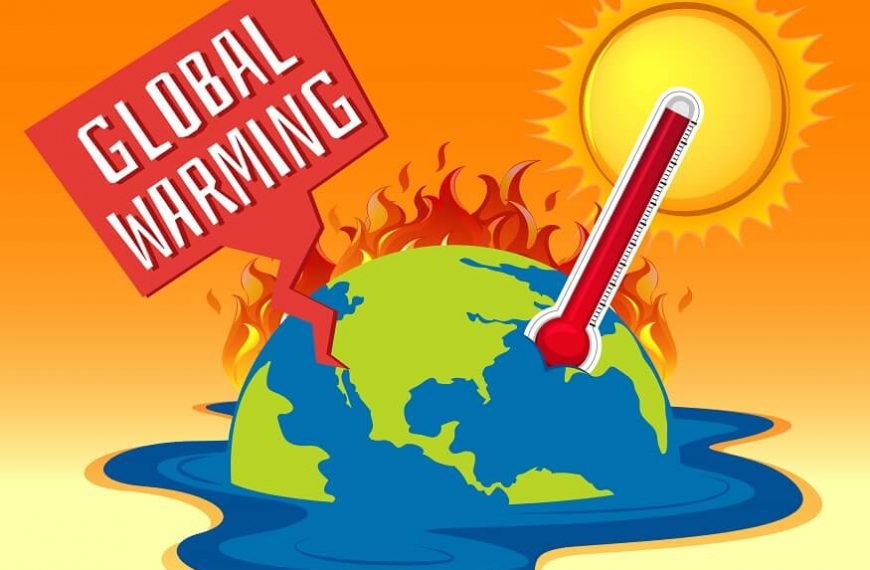In the last few decades, technological development has greatly aided our progress. To make our lives more pleasant, we have developed many equipment and systems. Modern technology advanced at a rapid pace during a short amount of time compared to the rest of history, particularly during the early modern period from the early 16th century to the late 18th century, often known as “The Scientific Revolution” or “The Enlightenment.” However, with the progress of mankind the quality of the Earth’s environment has deteriorated significantly.
Global warming is a word that practically everyone has heard of. However, most of us are still unsure of what it means. Thus, global warming refers to the gradual increase in the total temperature of the Earth’s atmosphere. There are several things going on that are steadily raising the temperature. Our ice glaciers are fast disappearing due to global warming. This is incredibly detrimental to both the environment and humans. Controlling global warming is difficult, yet it is not impossible. Identifying the source of an issue is the first step towards resolving it. As a result, we must first understand the causes of global warming in order to go forward in fixing it.
There are various reasons that lead to Global warming which have an impact on people’s lives and health in different ways. The main reason that leads to global warming is human negligence. For a basic, healthy lifestyle, the ever-increasing human population needs additional resources, such as land for farming and housing, technology developments for comfort, and ways to deal with the planet’s warming climate, among other things. The burning of fossil fuels to generate electricity is one of the main reasons for global warming. Even while individuals are growing more conscious of how the climate is warming, they still participate in behaviors that cause it. They often squander resources and contaminate the soil, water, and air.
Causes Of Global Warming:
Greenhouse Gasses: Emissions of greenhouse gasses into the atmosphere are the main factor contributing to global warming. The three gasses produced by human activity that are most frequently found in the atmosphere are carbon dioxide (CO2), methane (CH4), and nitrous oxide (N2O). Fossil fuel combustion for energy production, transportation, and industrial activities is the main source of these gasses’ discharge. The majority of greenhouse gas emissions, or around 80% of them, are carbon dioxide emissions, which are the main cause of global warming.
- Deforestation:
- Industrial processes:
- Agricultural Practises:
- Land Use Changes:
- Natural causes:
- Feedback Loops:
By absorbing CO2 from the atmosphere during photosynthesis, trees and forests are a crucial part of the global warming mitigation process. However, logging, urbanization, and agriculture all contribute to deforestation by removing trees that would otherwise serve as carbon sinks. The carbon held in trees is released into the atmosphere when they are chopped down or burned, which raises the atmospheric concentration of CO2.
A number of industrial processes cause the discharge of pollutants and greenhouse gasses into the atmosphere. CO2 emissions are produced, for instance, during the manufacture of cement and the usage of certain chemicals. Additionally, a significant factor in global warming is the production of fluorinated gasses from sectors like refrigeration and electronics manufacturing.
Methane and nitrous oxide emissions are largely caused by agriculture. Methane is produced during the digestive process of livestock, especially cattle (enteric fermentation), and waste management further increases methane emissions. Because of the nitrous oxide emissions caused by the use of synthetic fertilizers in agriculture, global warming is exacerbated.
Beyond deforestation, land use changes like urbanization and infrastructure construction can also enhance heat absorption and shift regional climatic patterns, which contribute to localized
Although human activity is the primary cause of global warming, other causes also contribute. Sulfur dioxide and other gasses are released into the atmosphere during volcanic eruptions, which can briefly chill the Earth’s surface. However, compared to the long-term warming trend brought on by human activity, these impacts are frequently transient. Additionally, changes in solar energy and the Earth’s orbit can affect temperature patterns over geological time spans, but these organic processes cannot explain the current fast warming.
The issue may become worse as a result of feedback loops brought on by global warming. For instance, as Arctic ice melts as a result of rising temperatures, the planet’s reflectivity (albedo) decreases, which increases the amount of solar radiation absorbed by the planet’s darker ocean and speeds up warming. The greenhouse effect is exacerbated as permafrost melts because methane, a strong greenhouse gas, is released into the atmosphere.
Effects on Global Warming:
- Melting Ice and Increasing Sea Levels:
- Extreme Weather Events:
- Ocean Acidification:
- Ecosystem Disruption:
The fast melting of polar ice caps and glaciers is one of the most apparent effects of global warming. These melting ice chunks raise sea levels, endangering low-lying islands and coastal settlements. Millions of people may be forced to relocate due to coastal erosion, land flooding, and rising sea levels.
Extreme weather phenomena are becoming more frequent and more intense as a result of global warming. The frequency and severity of hurricanes, typhoons, heat waves, droughts, and significant rainfall events have increased. These incidents have tragic results, including human fatalities, infrastructural damage, and environmental disruption.
High atmospheric concentrations of carbon dioxide cause ocean acidification in addition to global warming. It poses a major danger to marine life, especially coral reefs and shellfish, which depend on calcium carbonate to form their shells and skeletons, when the seas absorb extra CO2.
Global warming threatens biodiversity and disrupts ecosystems. Changes in precipitation and temperature can affect ecosystems, making it difficult for some species to adapt or survive which may result in extinction, endangerment, and changes in the range of species.
Fighting Global Warming is not only about rescuing the world; it is also about protecting our personal well-being and the prosperity of all living species on this lovely globe we call home. Climate change is one of the most serious dangers to the planet’s health. Inadequate research and careless exploitation of natural resources are two of the primary causes of the planet’s deterioration.
For more such exciting blogs, visit EuroKids!















